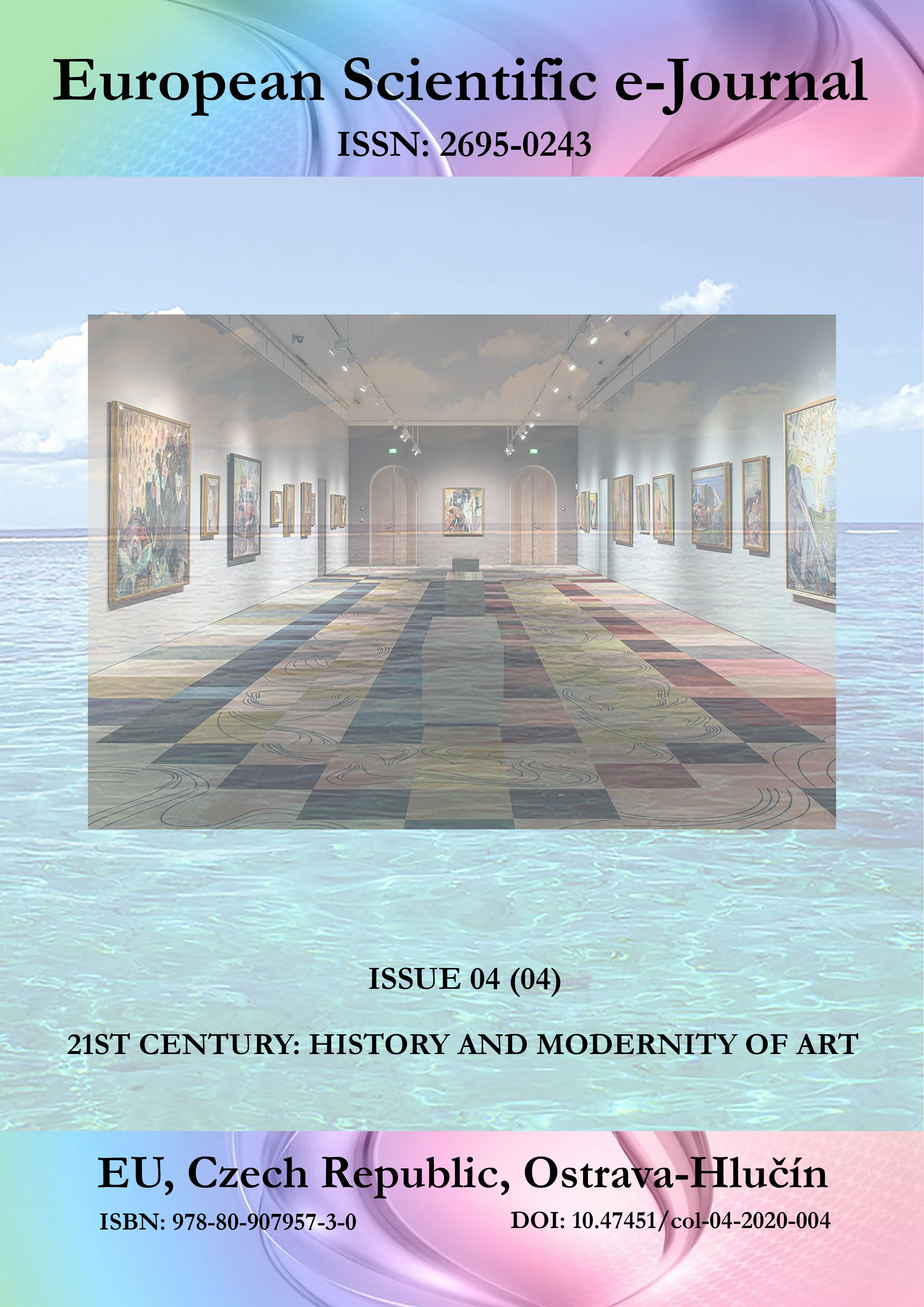The Influence of Postmodernism on the Evolution of Art in the 21st Century
DOI:
https://doi.org/10.47451/art2020-12-005Keywords:
postmodernism, art, transformation, evolution, Nietzsche, Groys, Heidegger, Krauss, BenhabibAbstract
In the modern world, a person is surrounded by an endless stream of data, which is often difficult to control. However, whether explicitly or implicitly, this flow has an impact on us: through advertising images, products in stores, the Internet and television. So, this leaves a huge imprint on our worldview and perception of the world not only at the everyday level but also at the level of perception of modern art. The article provides a comparative analysis of the influence of postmodernism ideas and philosophy on the transformation of the 21st century art from the point of view of the formation of positive and negative trends in the development of modern art. The authors conclude that postmodernism, combined with changes in global politics aimed at constant information pressure and de-personalization of the individual, so transforms art that its latest forms and trends can destroy the very classical concept of art, which is designed to reflect the individualism and versatility of man. Technological evolution as a result of the philosophy of postmodernism is ready both to develop art at a new level and to destroy its purpose.
Downloads
References
Bataille, G. A. (1973). Literature and Evil. Alastair Hamilton, Calder & Boyars Ltd.
Benhabib, S. (2002). The Claims of Culture. Princeton University Press.
Bertens, H. (1997). International postmodernism: theory and literary practice. Routledge.
Clark, M. (1990). Nietzsche on Truth and Philosophy. Cambridge: Cambridge University Press.
Groys, B. (1992). The total art of Stalinism: avant-garde, aesthetic dictatorship, and beyond. Princeton, N.J.; Oxford, Princeton University Press.
Heidegger, M. (1991). Nietzsche. Translated by Davis Farrell Krell. Harper San Francisco, Harper Collins.
Kaufmann, W. (1974). Nietzsche: Philosopher, Psychologist, Antichrist. Princeton University Press.
Krauss, Rosalind E. (1986). The Originality of the Avant Garde and Other Modernist Myths. Part I. Modernist Myths. The MIT Press.
Kutlunina, E. V. (2018). The problem of understanding contemporary art. New Ideas in Philosophy: Materials of the 4th International Scientific Conference (St Petersburg, July 2018), 14–20. St. Petersburg: Svoe Izdatelstvo.
McGowan, J. P. (1991). Postmodernism and its Critics. Cornell University Press.
Pegrum, M. A. (2000). Challenging Modernity: Dada Between Modern and Postmodern. Berghahn Books.
Pollock, G. (1999). Differencing the Canon. London & N.Y.: Routledge.
Post-Modernism. (2014). Artchive. https://artchive.ru/en/styles/postmodernism
Published
Issue
Section
License
Copyright (c) 2025 European Scientific e-Journal

This work is licensed under a Creative Commons Attribution 4.0 International License.
The European Scientific e-Journal (ESEJ) is an open access journal. Articles are available free of charge as PDF files on the website of the European Institute for Innovation Development. PDF files can be previewed with Acrobat Reader from www.adobe.com.
All articles of the “Tuculart Student Scientific” are published under a Creative Commons Attribution 4.0 Generic (CC BY 4.0) International license.
According to the Creative Commons Attribution 4.0 Generic (CC BY 4.0) International license, the users are free to Share — copy and redistribute the material in any medium or format for any purpose, even commercially (the licensor cannot revoke these freedoms as long as you follow the license terms).
Under the following terms:
- Attribution — You must give appropriate credit, provide a link to the license, and indicate if changes were made. You may do so in any reasonable manner, but not in any way that suggests the licensor endorses you or your use.
- No additional restrictions — You may not apply legal terms or technological measures that legally restrict others from doing anything the license permits.


